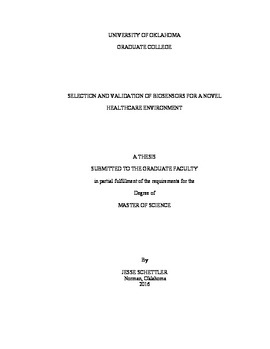| dc.description.abstract | Flotation tanks provide a unique environment for reducing the deleterious effects of stress on the human mind and body. As a result, biosensors capable of collecting objective physiological data during float sessions are needed to identify and quantify the resulting health effects. This thesis presents the selection and validation of off-the-shelf biosensors to investigate the physiological stress-reducing effects induced by this novel healthcare environment. The demands of the float environment required the biosensors to be wireless, waterproof, salt-proof, and minimally invasive. Interface and design modifications were made to the selected devices to ensure reliable operation in the unique conditions created by float tanks, and these modifications were tested for effectiveness in protecting the sensors, maintaining signal integrity, and reducing all forms of external sensory input that may detract from the float experience. As a result of the validation process, it was determined that the modified biosensors were capable of successfully recording movement, electrocardiograph (ECG), respiration, electroencephalograph (EEG), and blood pressure during float sessions.
This thesis also investigated time synchronization and the analyses of biosensor outputs as they pertain to float research. A method to ensure time synchronization among sensors was developed and tested against an industry-leading physiological recording device to verify the accuracy of the biosensors’ timestamps. Additional experiments among sensors were conducted to further validate the technique and illustrate that a transient event can be identified across multiple data streams. A neural network was designed to facilitate the calculation of cardiac metrics such as heart rate and heart rate variability, and the results were analyzed to determine which methods provide the most useful information for float research. Data obtained from two accelerometer devices was also examined to determine optimal cut-points for classifying movement within the float tank, and measures of stillness and avoidance behavior were characterized. The proposed biosensors and methods were found to reliably and accurately measure changes in physiological variables during float sessions. This thesis documents the first successful implementation of collecting continuous physiological data during the float experience. | en_US |
